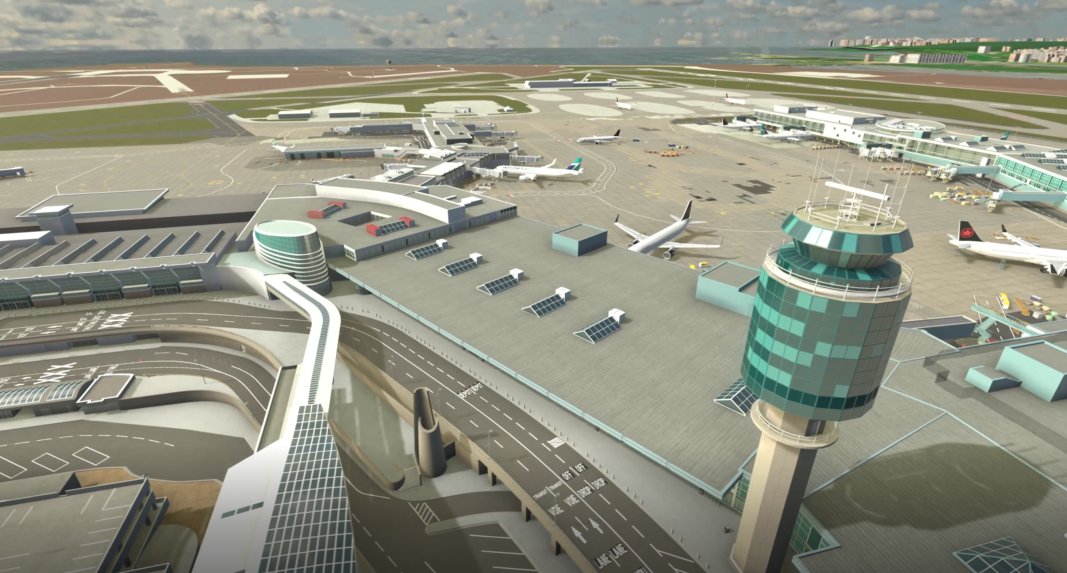
Photo: Vancouver Airport Authority
Vancouver Airport to commercialise digital twin
24 January 2023
by Jonathan Andrews
If you have ever entered the US, Canada, Caribbean or some European countries, the chances are that you’ve used a biometric kiosk to verify your passport. You may have thought they were developed by a technology company in Silicon Valley, but the kiosks were actually developed in-house by the Vancouver Airport Authority.
The department is unique in that it can use Vancouver’s airport as a live test site to build and test technology before going to market. Additionally, two years ago an Innovation Hub was launched which supports the region’s innovation ecosystem by using the airport as a platform to connect the community and economy to data, ideas and new technologies.

“Our mandate is quite simple,” explains Chris Gilliland, Director, Innovation and Technology Development. “It’s to create technologies that probably haven’t been discovered or developed yet. To first and foremost solve our [own] issues and then go and sell and market our technologies to other airports and complementary registries around the world.”
The kiosks, developed in the late 2000s, were created to overcome a common bugbear of passengers and airports alike – lengthy and time-consuming border queues. Vancouver’s airport is limited in space, being based on a protected island, so another solution had to be found other than expanding its physical footprint.
In collaboration with the Canada Border Services Agency, the kiosks were developed to handle the administrative functions, although an officer is always present to verify and further question passengers if needed. To date, the technology is used in 45 airports and seaports globally.
Commercialisation
What focuses Gilliland’s time now is a new digital twin that was launched last year. He says his team has invested and built one of the most comprehensive digital twins of any airport in the world.
“We’re starting to really see the value internally for adoption,” he adds. “The number of airport employees that are using it as an everyday tool is increasing exponentially. And we’re continuing to add new use cases. While we may have focused last year on internal efficiencies and situational awareness, this year is all about airside optimisation.”
Built on principles of privacy by design, Gilliland and his team are now exploring simulation to be able to change some of the parameters outside and inside of the terminal to further maximise efficiencies and operations.
He reveals he is about to embark on a commercialisation strategy, and place a greater focus on stakeholders, including airlines and other companies interested in testing and trialling the digital twin.
“Other airports look to Vancouver for innovation, and if something works at Vancouver International Airport, it’s probably going to work at another airport,” he says.
Indeed, interest is growing from other airports and Gilliland and Vancouver are well positioned to look at those opportunities.
“I do believe that we are the only airport in the world to have an in-house development team,” he comments. “I absolutely love that structure. It creates opportunities for us to up-skill and to bring in new talent that I think are really required in airports as we move forward in this new age.”











